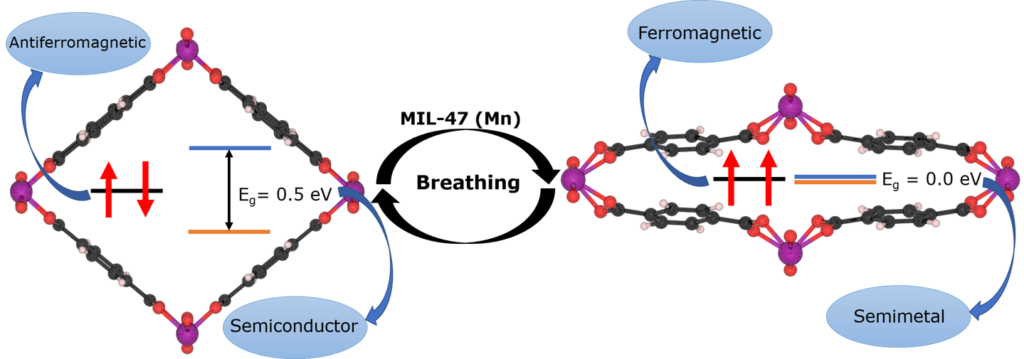| Authors: | Mohammadreza Hosseini, Danny E. P. Vanpoucke, Paolo Giannozzi, Masoud Berahman and Nasser Hadipour |
| Journal: | RSC Adv. 10, 4786-4794 (2020) |
| doi: | 10.1039/C9RA09196C |
| IF(2019): | 3.119 |
| export: | bibtex |
| pdf: | <RSC Adv.> (Open Access) |
 |
| Graphical Abstract: The breathing MIL-47(Mn) Metal-Organic Framework. Upon breathing, the electronic structure of this MOF undergoes a transition from an anti-ferromagnetic semiconductor, to a ferromagnetic semi-metal. |
Abstract
The structural, electronic and magnetic properties of the MIL-47(Mn) metal–organic framework are investigated using first principles calculations. We find that the large-pore structure is the ground state of this material. We show that upon transition from the large-pore to the narrow-pore structure, the magnetic ground-state configuration changes from antiferromagnetic to ferromagnetic, consistent with the computed values of the intra-chain coupling constant. Furthermore, the antiferromagnetic and ferromagnetic configuration phases have intrinsically different electronic behavior: the former is semiconducting, the latter is a metal or half-metal. The change of electronic properties during breathing posits MIL-47(Mn) as a good candidate for sensing and other applications. Our calculated electronic band structure for MIL-47(Mn) presents a combination of flat dispersionless and strongly dispersive regions in the valence and conduction bands, indicative of quasi-1D electronic behavior. The spin coupling constants are obtained by mapping the total energies onto a spin Hamiltonian. The inter-chain coupling is found to be at least one order of magnitude smaller than the intra-chain coupling for both large and narrow pores. Interestingly, the intra-chain coupling changes sign and becomes five times stronger going from the large pore to the narrow pore structure. As such MIL-47(Mn) could provide unique opportunities for tunable low-dimensional magnetism in transition metal oxide systems.

